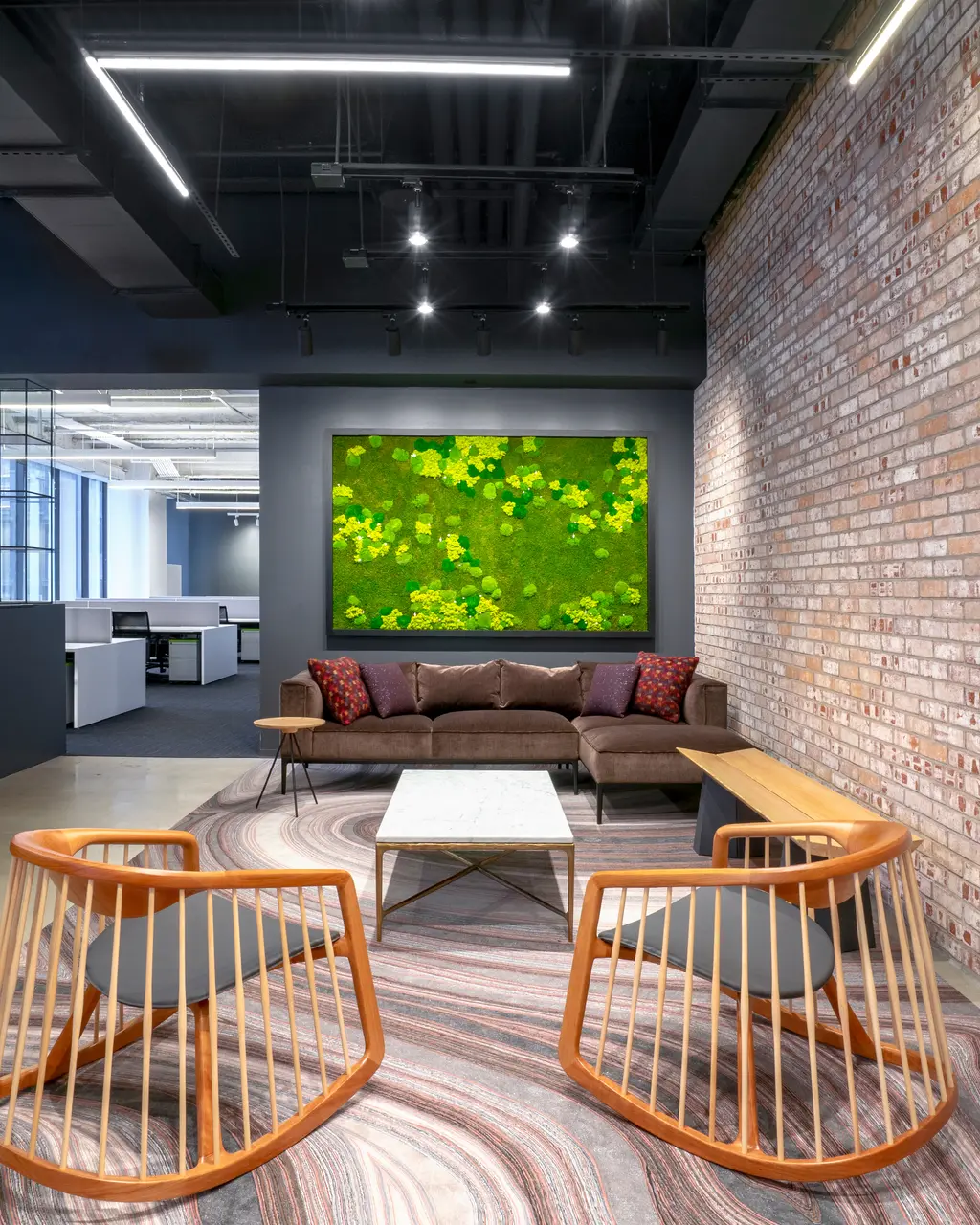Introduction to Organic Wall Art
Organic wall art created with all-natural preserved plants is a unique way to bring nature’s beauty into your designed space. Using materials like wood, plants, and natural fibers, organic wall art adds a touch of tranquility to any designed space. This type of art can vary from botanical prints to macrame wall hangings to moss walls, creating a serene oasis right in the built environment.
Benefits of Organic Wall Art in Your Living Space
Organic wall art (Moss Walls / Preserved Gardens that require no maintenance) can bring a sense of calm and nature into the living spaces. It can create a peaceful oasis, helping occupants to relax and unwind after a long day. Organic wall art is often made from natural materials like wood, preserved moss and plants, or even natural stones, which can have a soothing effect on any surrounding, creating a connection between humans and nature. Additionally, organic wall art is a sustainable and eco-friendly way to decorate any designed space, bringing a piece of the outdoors inside.
Choosing the Right Organic Wall Art Pieces
When selecting organic wall art, consider the size of your space and the overall aesthetic you want to achieve. Look for pieces that complement your existing decor and bring a sense of nature indoors. Plants, landscapes, and botanical prints are popular choices for creating a serene atmosphere. Before making a decision, visualize how this organic / plant art will look in your designed space and ensure it fits well with the environment’s color scheme. Opt for pieces that resonate with the rest of the space and contribute to the peaceful ambiance desired.
Incorporating Nature into Client’s Spaces
Bringing nature into the client’s designed space through decor can create a calming and refreshing atmosphere. Preserved Moss and Plants, natural textures, and earthy colors are great ways to incorporate nature into any space. These elements can help you create a serene oasis.
Creating a Serene Oasis with Organic Wall Art
Organic wall art can transform your living space into a serene oasis by adding natural elements that evoke a sense of calm and tranquility. Incorporating organic materials like wood, botanical prints, nature-inspired designs, preserved moss and preserved plants that will require no maintenance can create a peaceful atmosphere in the designed spaces. The color green, in particular, is known for its soothing qualities, making it a popular choice for organic wall art. Additionally, incorporating elements like natural textures and earthy tones can further enhance the tranquil ambiance of any designed space.
Placement and Arrangement Tips for Organic Wall Art
When hanging organic wall art, consider the following tips:
- Height placement: Hang the artwork at eye level for the best viewing experience.
- Spacing: Ensure there is enough space between each piece to allow them to stand out individually.
- Balance: Create a balanced arrangement by mixing sizes and shapes of art pieces.
- Theme consistency: Stick to a cohesive theme or color palette for a harmonious look.
- Natural lighting: Position the artwork where it can be well-lit to enhance its beauty.
- Personal touch: Display pieces that resonate with the occupants and integrate well with other elements in space to make the space feel like a serene oasis.
How to Maintain and Care for Organic Wall Art
When it comes to maintaining and caring for organic wall art (preserved moss and preserved gardens), keeping it away from direct sunlight is vital to preserving its colors and texture. You can dust the organic wall art with a soft, dry cloth to prevent dirt buildup. However, the Preserved Moss and Plant species are organic, and inert items, that don’t attract dust, like Faux Plants. Avoid placing it in high humidity areas to prevent moisture Avoid placing it in high-humidity areas to prevent moisture damage since the Moss Walls and Preserved Gardens are open to damage if they are exposed to humidity. Moss Walls and Preserved Gardens are open to damage if they are exposed to humidity. Remember, organic wall art adds a natural touch to the space, so treat it with care to keep your serene oasis looking its best.
Enhancing Mood and Ambiance with Organic Wall Art
Organic wall art can significantly impact the mood and ambiance of any living space. By incorporating natural elements into your decor, such as preserved moss, preserved plants, landscape scenes, or organic textures, you can create a serene oasis at any designed space. Here are a few ways organic wall art can enhance your environment:
- Natural Connection: Bringing nature indoors with organic wall art can help create a sense of calm and connection to the outdoors.
- Enhanced Relaxation: The presence of natural elements in living space can promote relaxation and reduce stress levels.
- Visual Appeal: Organic wall art can add aesthetic interest and texture to walls, creating a visually appealing environment.
- Personal Touch: By choosing organic artwork that resonates with your clients personally, you can infuse living space with a sense of character and individuality.
Consider incorporating organic wall art into your designed space to create a tranquil and inviting atmosphere that promotes well-being and relaxation.
Conclusion: Transforming Any Living Space with Organic Wall Art
To conclude, incorporating organic wall art into any living space can truly transform it into a serene oasis. The natural elements and greenery crafted by preserved moss and preserved plants can bring a sense of tranquility and peace to any surroundings, creating a harmonious atmosphere. By carefully choosing pieces that resonate with your clients, you can enhance the aesthetic appeal of your designed space and create a calming environment where occupants of these built environments can unwind and relax after a long day. Let nature’s beauty inspire and rejuvenate these living spaces with organic wall art.
For more information on this subject and more, please visit our website: www.gardenonthewall.com


